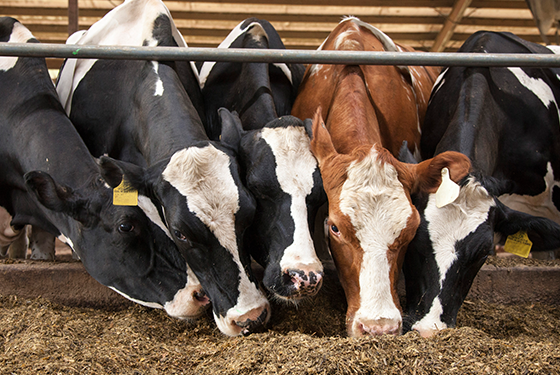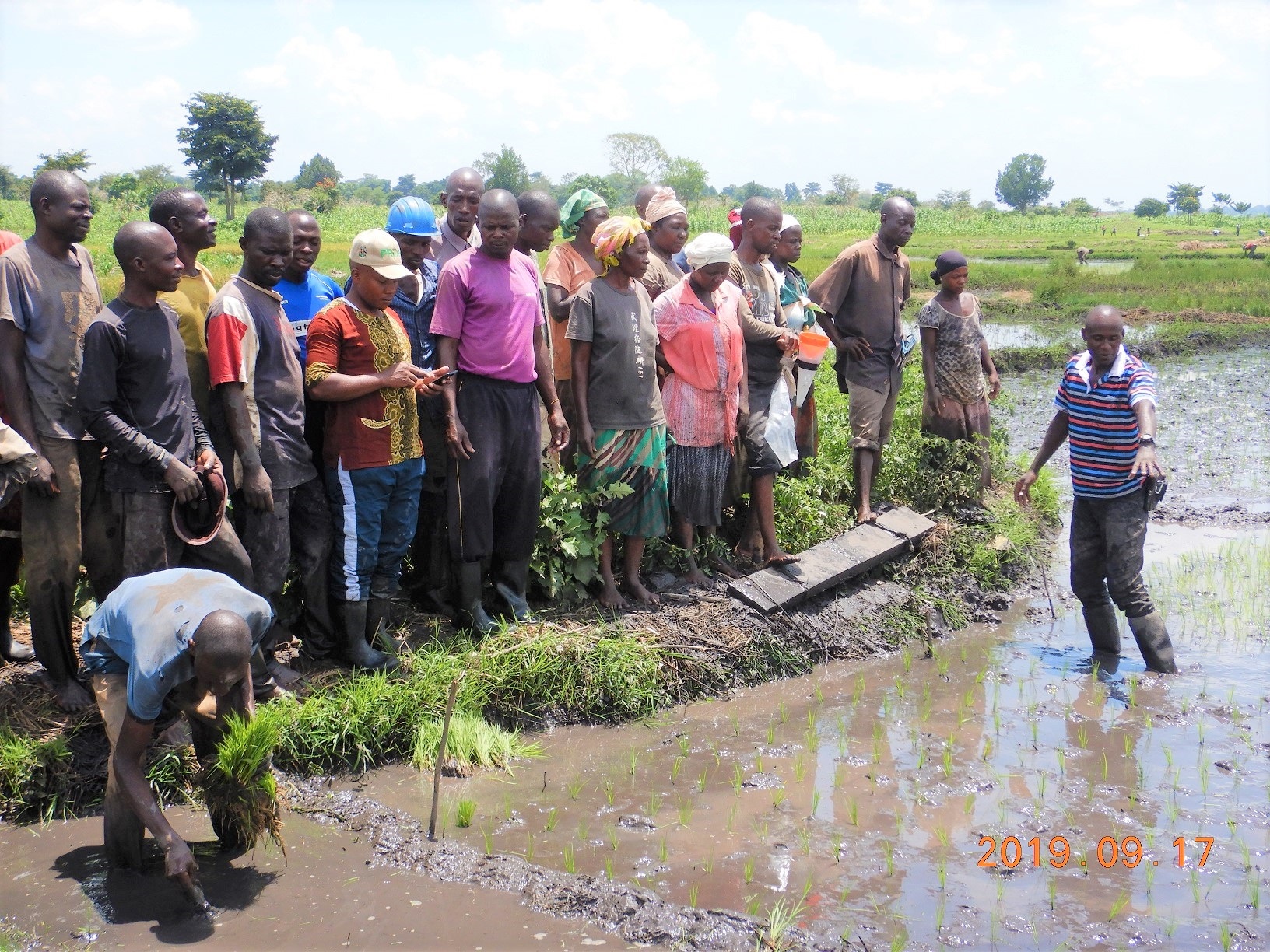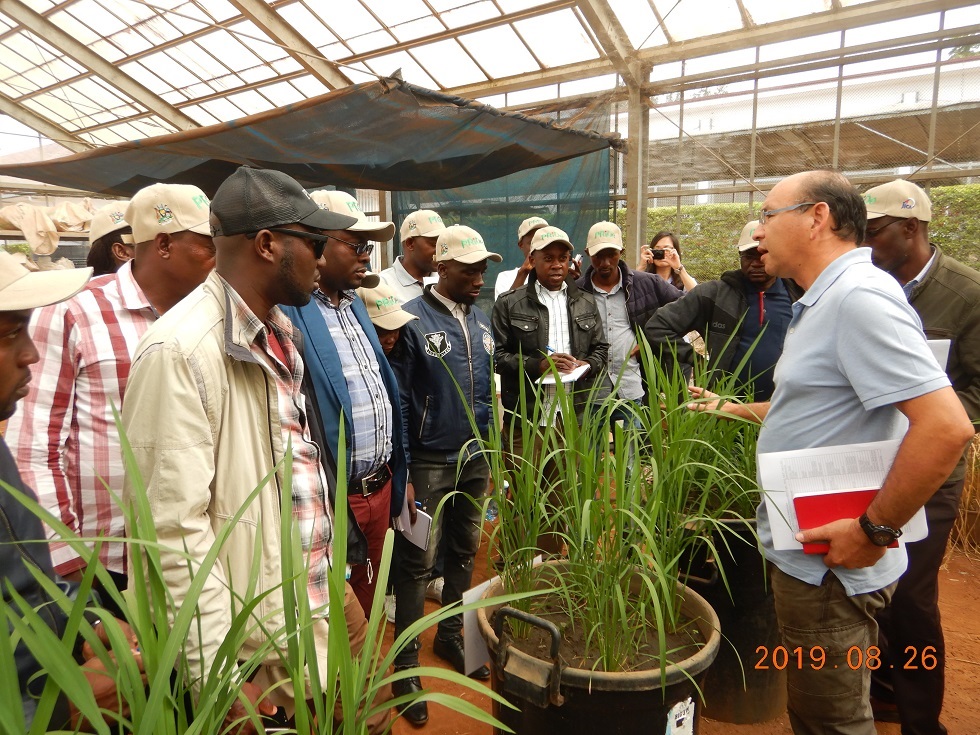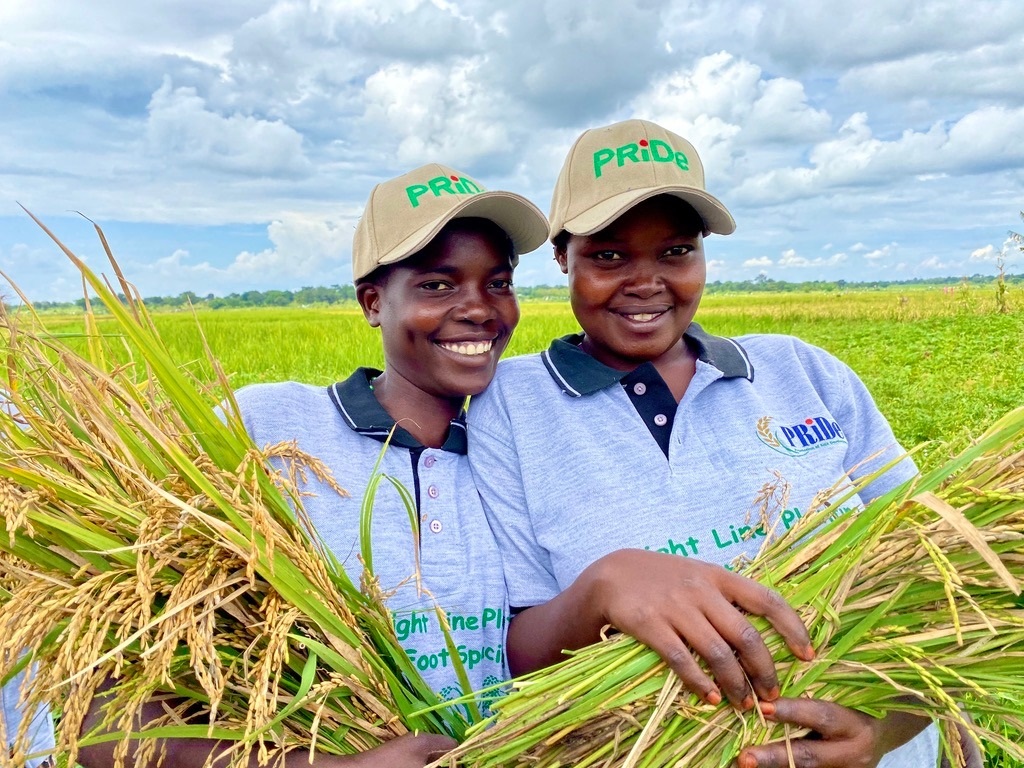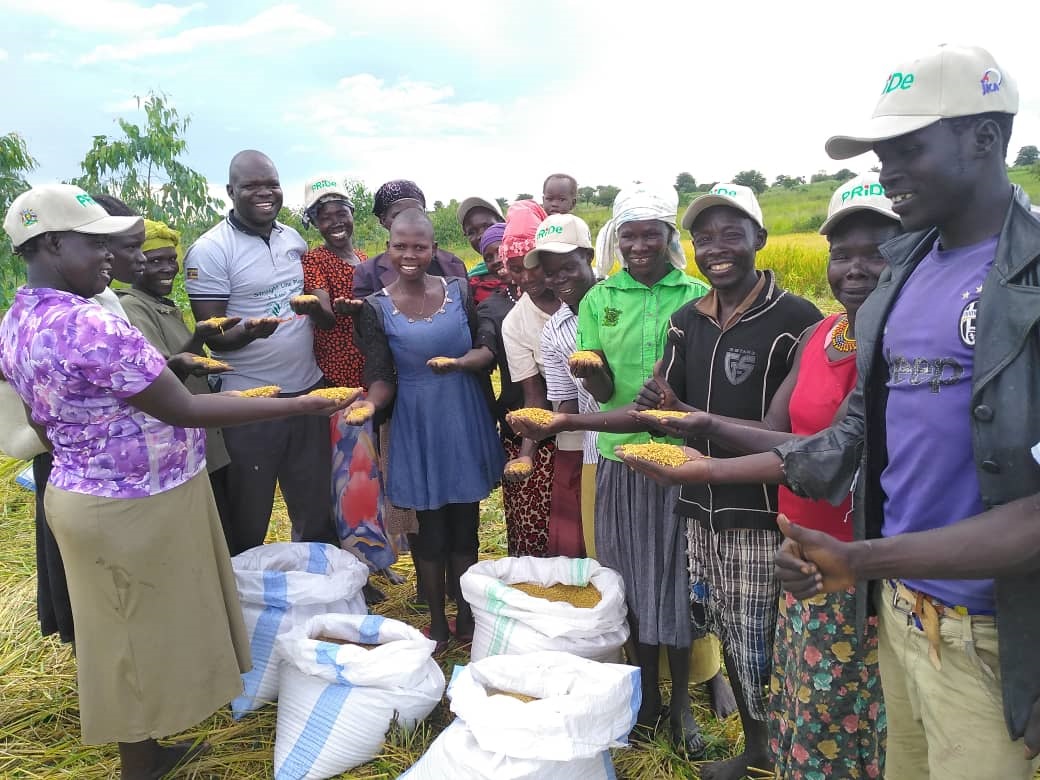The MOBIP Project
Uganda Vision 20140 is a key strategy document for the government of Uganda (GOU) and aims to make Uganda a middle-income country by 2040. The National Development Plan II (NDP2) mentions the development of the livestock sector as one of these strategies, and in particular Uganda’s ability to produce some of the best beef in Africa.
The European Union (EU) identified the opportunity of the beef sub-sector within the National Indicative Plan (NIP) for Uganda and agreed to co-fund, the GOU, a five-year project with a 15 million Euro contribution. The project is funded under the 11th European Union Development Fund (EDF) The project is called “Developing a Market Oriented and Environmentally Sustainable Beef Meat Industry in Uganda” (MOBIP) and is implemented by Ministry of Agriculture, Animal Industry and Fisheries. Part of the grant provided by the EU is a grant to Uganda Meat Producers Cooperative Union (UMPC) and for a service contract to engage the Technical Assistance Team to the project.
Project Objectives
Overall objective: "To contribute to a competitive, profitable, job-intensive, gender responsive and environmentally-sustainable agricultural sector in Uganda, in order to alleviate poverty and improve food and nutrition security."
MOBIP Results areas
The project will be implemented through the following three results areas that aim at addressing the major challenge affecting the beef meat industry:
Result 1 – The policy, legal, regulatory and institutional framework, including standards, guidelines and best practices along the beef value chain are reviewed, updated and enforced* . A particular focus will be set on women’s empowerment and on mitigation of climate change/environmental impacts.
This result area will be achieved through the following activities
1.1 Needs identification for review and update of the legislative and policy frameworks.
1.2. Review and update the legislative and policy frameworks.
1.3. Dissemination and publication of the results of the review.
1.4. Support the control, inspection and enforcement systems
1.5. Strengthen environmental monitoring of beef/meat-related activities.
Result 2 – Beef meat production, productivity and quality assurance in the targeted areas is enhanced, giving priority to climate smart, environmentally sustainable, locally developed practices including small-holder agriculture and attention to rural livelihoods and formation of producer groups, including women’s groups when available. The following activities will be implemented to achieve this result:
2.1 Promote animal disease control and prevention in the targeted areas
2.2 Strengthening small holder livestock farmer associations (including women’s groups)
2.3 Sustainable support to local brood stock.
2.4 Improve pasture (Rangeland) management
2.5 Promote integrated water management
2.6 Construction of water harvesting infrastructures.
2.7 Promote supplementary feeding
Result 3 – Improved marketing, transportation and value addition for beef meat from the targeted area: aiming to promote local meat consumption to stimulate the market, stimulating demand for processed meat products, increasing safer meat processing and ensuring animal welfare practices during transportation. The results will be achieved through the following activities:
3.1 Carry out needs identification for support to slaughtering facilities and the market chain particularly in addressing animal welfare standards along the transportation chain
3.2 According to the needs identification, two options are possible: building a new regional abattoir in one of the DCZ, through a Public-Private Partnership (PPP), or rehabilitating existing slaughter facilities (slaughterhouses, slabs, etc.) at local level.
3.3 Support urban women groups’ commercialization of cooked beef products to stimulate local demand for beef and beef products.
Project components
Policy and Legislation
Ensures policy is up to date, relevant to the current standards and norms and in enforce to ensure compliance
Animal Health
Promotion of animal disease control and prevention
Animal Breeding
Ensuring optimal animal breed type according to location and production system. Use of indigenous, exotic and cross breed to optimize animal productivity
Nutrition, Water, Pasture and Rangelands
To maximise growth rates and minimize beef sector methane emissions, which contribute to climate change. To ensure access to improve pastures, feed and water
Transport, Marketing, processing and value addition and food safety
Ensures meat handler and consumer protection. Best practice will be promoted to support meat marketing and consumption.
Project Management unit (PMU)
The PMU will be responsible for the coordination of planning, monitoring and evaluation of all activities within the beef value chain.
Programme implementation
The Contracting Authority for MOBIP is the National Authorising Officer (NAO) at the Ministry of Finance, Planning and Economic Development (MFPED) of the Government of Uganda, whilst the Project Supervisory Authority is the Directorate of Animal Resources, MAAIF. The project will be implemented by a Project Management Unit (PMU) under the Directorate of Animal Resources (DAR) in Entebbe, Uganda. The PMU has a National Programme Coordinator (NPC) and a Deputy NPC appointed by the Permanent Secretary (PS) of MAAIF and a Technical Advisory Team (TAT) of three contracted key experts, plus support staff directly contracted by the EUD. The PMU works closely with the Component Heads of DAR.
Overall implementation of the Project activities at district and national levels is to be guided overall by the project Technical and Steering Committees. The committee will have the overall oversight and policy decision making responsibilities on major issues pertaining to the Project. The PMU will provide technical support to the steering committees for routine implementation of the Project activities through regularly Technical Committee Meetings which will be held no less than two weeks in advance of any Steering Committee.
The project implementation modality will be
• Indirect management with the Government of Uganda through a PMU
• Direct or indirect Management – Grants – Call for Proposal (targeting Non-State Actors or International Organizations specialised in the beef meat industry)
• The private sector will be a key stakeholder in the implementation of the project.
The duration of the programme will be 3 years and 8 months and 8 months for closure period as per EU regulation.
Project Area
The Project will be implemented in the Central and South-Western part of the Cattle Corridor, in two areas formerly defined by MAAIF as “Disease Control Zones” (DCZ 1 & 2). The MOBIP will be implemented in the following districts: Bulisa, Kayunga, Kiboga, Kiryandongo, Kyankwanzi, Luwero, Masindi, Nakaseke, Nakasongola in Disease Control Zone 1 and Lwengo, Lyantonde, Masaka, Mbarara, Mityana, Mpigi, Mubende, Ntungamo, Greater Rakai (Rakai and Kyotera districts), Greater Kibaale (Kibaale, Kakumiro and Kagaadi Districts), Sembabule, Kiruhura, Kalungu, Bukomansimbi, Butambala, Gomba, Isingiro in Disease Control Zone 2. (Figure 1 Map) The project will also target Entebbe (Wakiso District), which is the location of MAAIF, and Kampala which is the location of UMPCU and the MAAIF (Wandegeya sub-office). Both Kampala and Wakiso Districts are strategic for a number of activities in the meat industry: transporters, slaughtering, processing, and also home to the most important private sector stakeholders and marketers where 70% of Uganda’s GDP is generated and 3 million urban consumers reside.
Other projects
- National Oil Palm Project Uganda
- NUFLIP PHASE 1
- The UMFSNP project
- Banana Livelihood Diversification project
- Uganda-China Cooperation
- The ACDP project
- The VODP2
- The ENRP project
- The ATAAS project
- The PISD project
- The RPLRP project
- The MOBIP project
- The Goat Export Project
The Uganda Multi-sectoral Food Security and Nutrition Project (UMFSNP) is implemented, over a period of five years, by the Government of Uganda (GoU) through the Ministry of Agriculture, Animal Industry, and Fisheries (MAAIF) working in a multi-sectoral collaboration with the Ministry of Health (MoH) and the Ministry of Education, Science Technology and Sports (MoESTS)
This project helps to support vulnerable communities in Western Uganda to better adapt to the effects of climate change (CC) through banana value addition activities, to provide greater opportunities for income generation, poverty reduction and food security
The Government of the Republic of Uganda and the Government of the People’s Republic of China have had a cordial relationship for a long time. China has made significant contributions to Uganda’s Agricultural sector development including provision of project aid to Uganda in form of interest-free loans and grants. Notable ones include the Kibimba and Doho rice schemes, Wakawaka Fish landing site, Kajjansi Aquaculture Training Centre, Hydropower Stations and Road Construction. Trade has included leather, coffee, fish and food products among others.
The Ministry of Agriculture, Animal Industry and Fisheries (MAAIF), with support from the World Bank is implementing the Agriculture Cluster Development Project (ACDP). The project arose from the need to implement the Ministry’s comprehensive plan to operationalize the Agriculture Sector Development Strategy and Investment Plan 2011/12 – 2014/15 (now Agriculture Sector Strategic Plan 2015/16 – 2019/20) and in line with the Uganda National Development Plan.
Uganda imports 60-70% of its edible and soap needs; Population growth and rising incomes continue to fuel an annual growth rate of 9% in domestic and regional demand for vegetable oil and its by-products. VODP 2 is Uganda’s strategic effort and increase domestic vegetable oil production, address rural poverty by involving smallholder farmers in oil crops production and improve the health of the population through increased vegetable oil intake.
The project is expected to increase production and productivity, mainly of small holder rice farmers, by focusing on those factors that currently limit production which include;
In 2010, the ATAAS project was developed as an investment in maintaining and raising the level of farmer productivity and household income through the development and adoption of modern farming technologies, techniques and strengthening market linkages. The project had key activities along the research-extension-farmer-market value chain continuum under five components: (1) Developing Agricultural Technologies and Strengthening the National Agricultural Research System (NARS); (2) Enhancing Partnerships between Agricultural Research, Advisory Services and other Stakeholders; (3) Strengthening the National Agricultural Advisory Services (NAADS); (4) Supporting Agribusiness Services and Market Linkages; and (5) Program Management and Coordination.
The Ministry of Agriculture, Animal Industry, and Fisheries (MAAIF) and Japan International Cooperation Agency (JICA) agreed to execute a study for Irrigation Scheme Development referred to as The Project on Irrigation Scheme Development in Central and Eastern Uganda (PISD) through technical cooperation.
The focus was on establishment of medium and large scale irrigation scheme in Uganda targeting farmers cultivating mainly rice in lowland areas with season flooding and unreliable agricultural water source(s). The Study has was entrusted by JICA to the JICA Study Team consists of a consultant from Japan in collaboration with counterpart staffs from MAAIF and MWE. A total of 10 candidate sites districts were studied for irrigation development potential in the districts of Butambala, Buikwe, Kween, Sironko, Bukedea, Bulambuli, Mbale, Butaleja, Budaka and Soroti..
The Regional Pastoral Livelihoods Resilience Project (RPLRP) is a regional project financed by a USD 40 Million loan got by GOU from the World Bank and implemented by three IGAD member states: Uganda, Kenya and Ethiopia.
The RPLRP was prepared within the framework of the IGAD Drought Disaster Resilience and Sustainability Initiative (IDDRSI) and aligned with the Regional Programming Paper (RPP) and Country Programming Paper (CPPs).
Uganda Vision 20140 is a key strategy document for the government of Uganda (GOU) and aims to make Uganda a middle-income country by 2040. The National Development Plan II (NDP2) mentions the development of the livestock sector as one of these strategies, and in particular Uganda’s ability to produce some of the best beef in Africa.
Project Objectives
“To enhance the contribution of the goat industry to farmers’ income and welfare.”
Specific objectives
Avail improved indigenous and exotic (Savannah) goat germplasm to farmers in the project area which will serve as a springboard for establishing a pilot goat export zone in the country
To establish open nucleus breeding herds coupled with systematic cross breeding programme for generating meat goat types for fattening and
Improve the goat management systems and create sustainable supplies of quality goats for internal and export markets.

